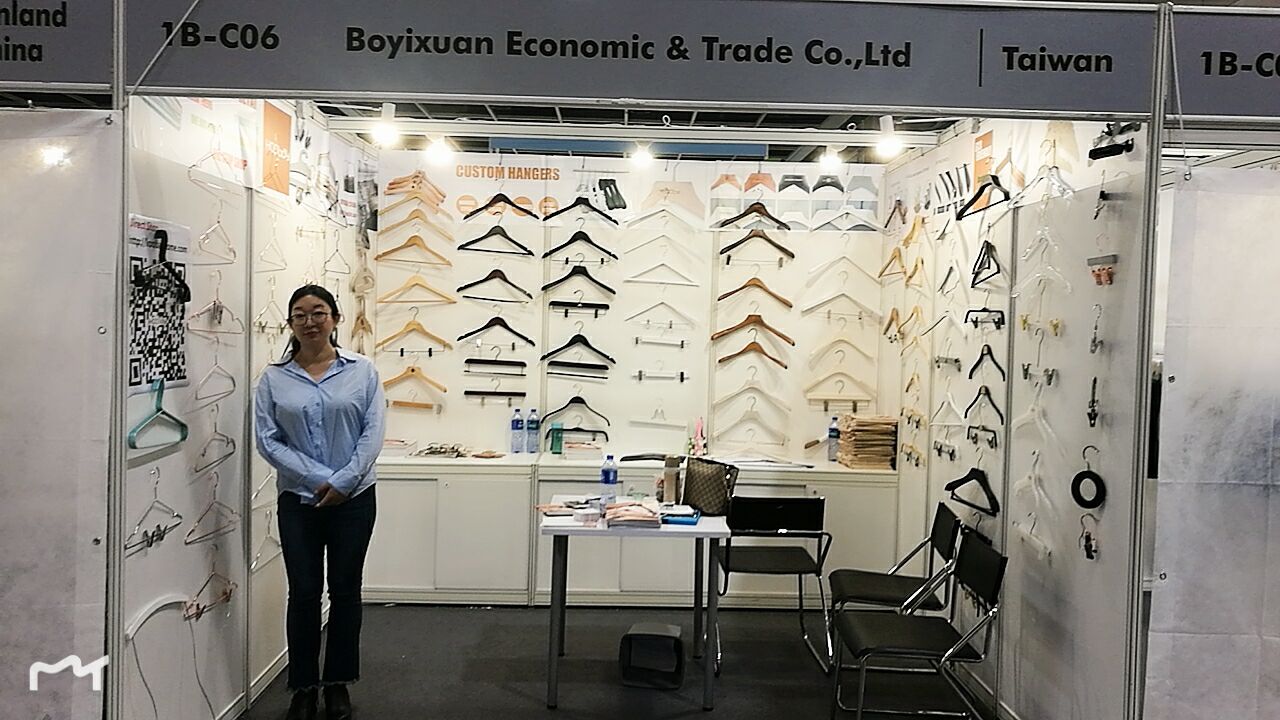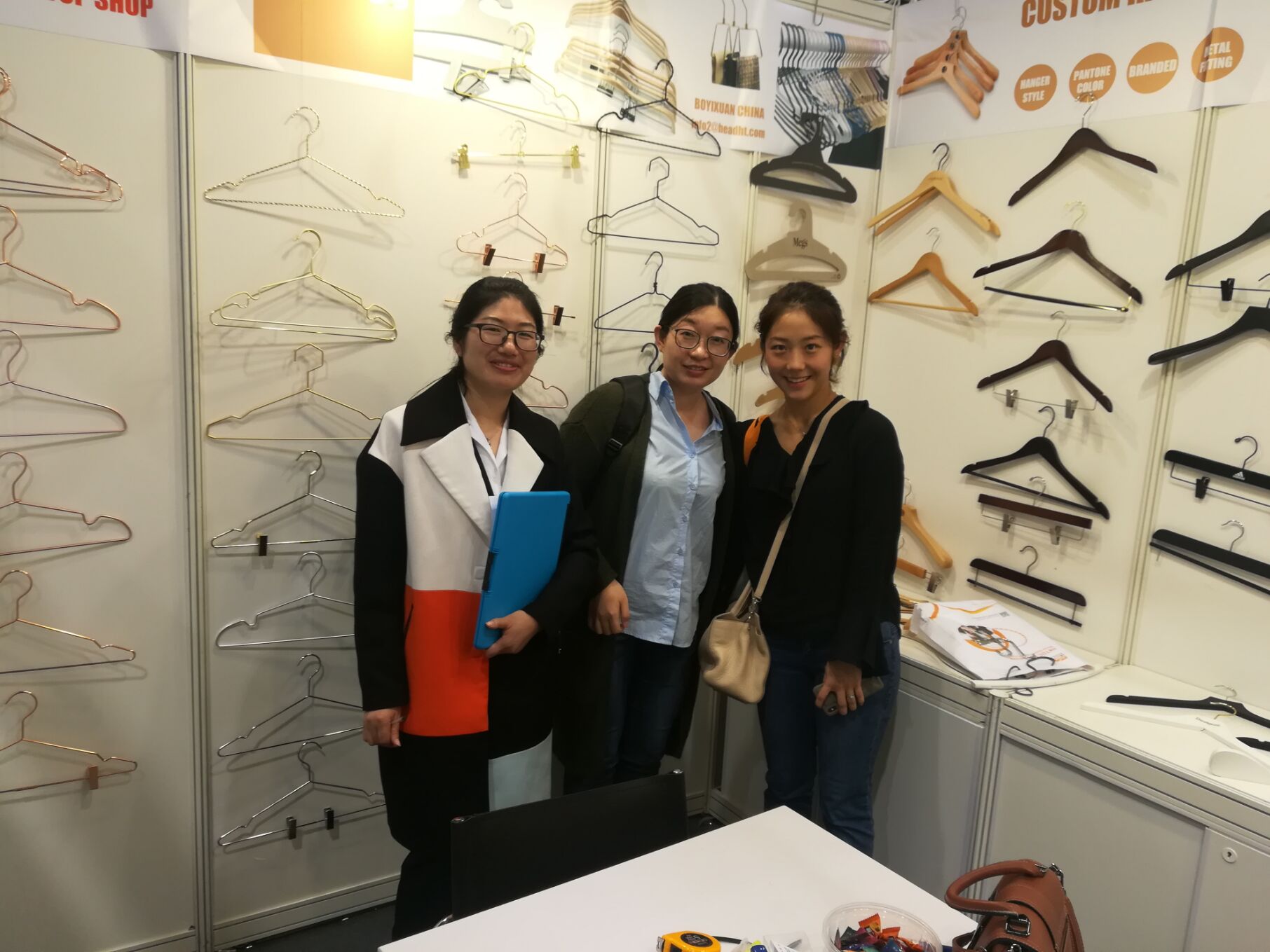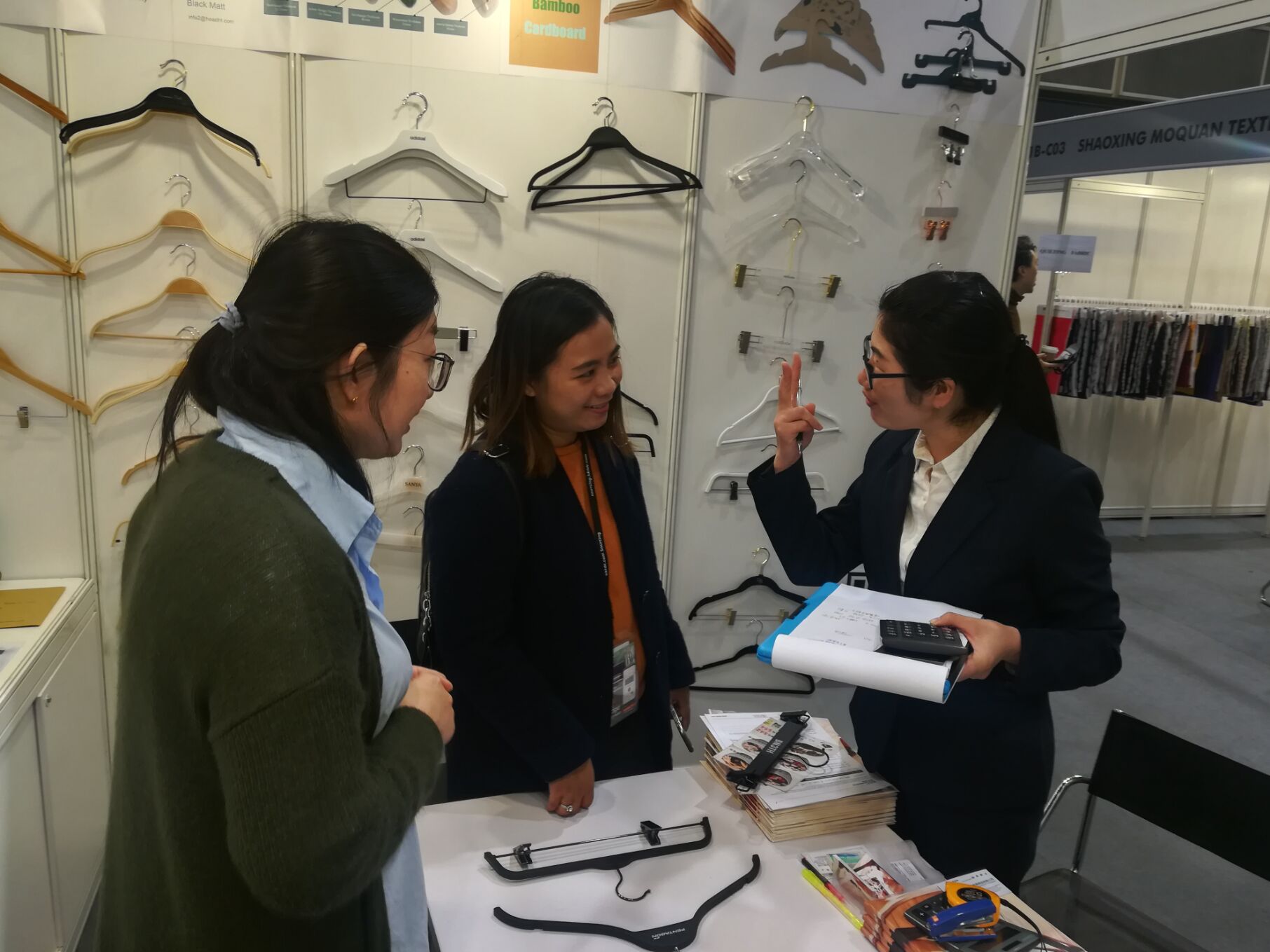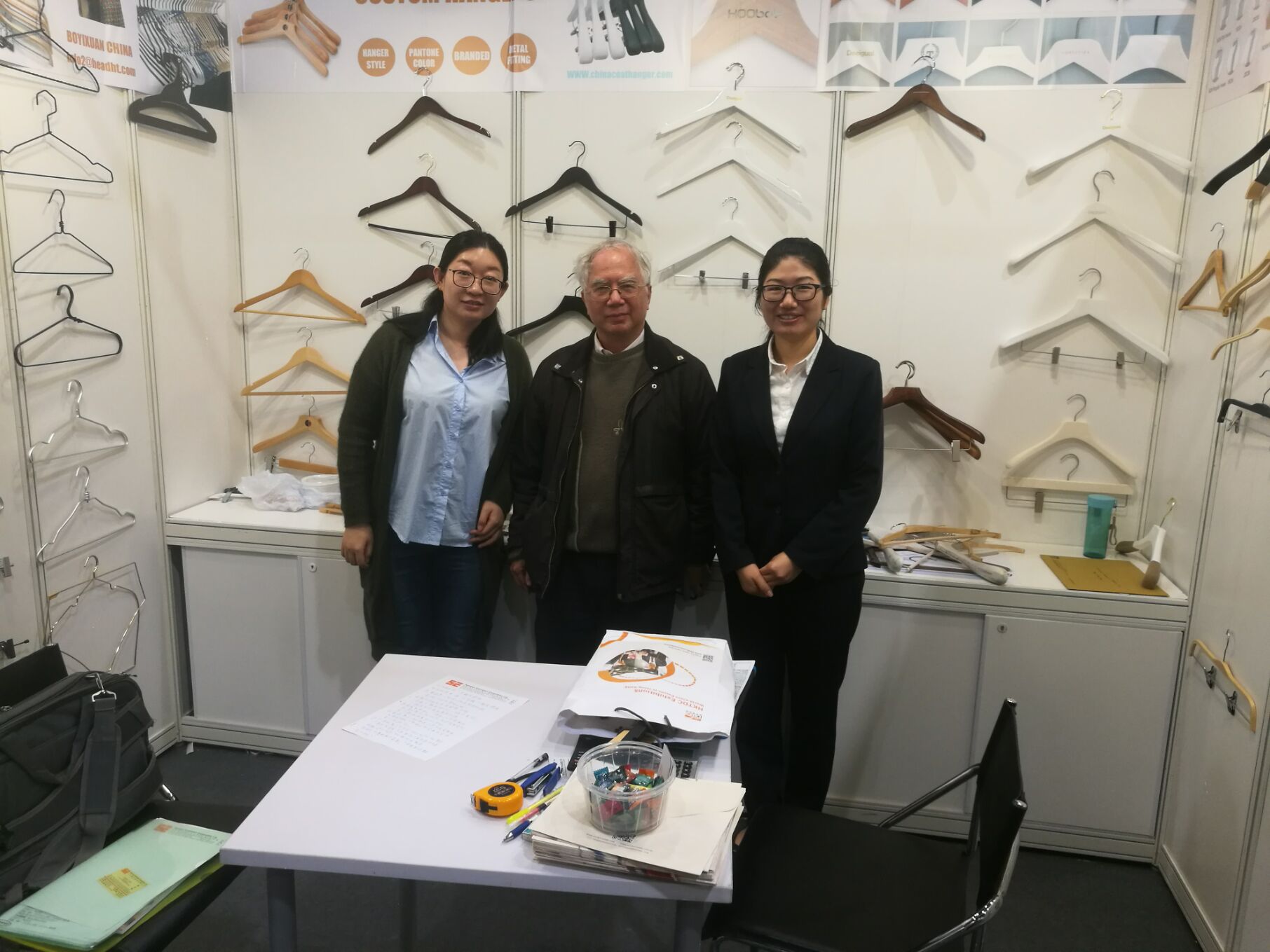2019-06-25





HHANGER TEAM
2019-06-25
907-909, Building 2, Noble Plaza 328, Dunhua Rd, Qingdao, 266034
+86-532-6699 7292 ext 0
array(7) {
[0] => array(13) {
["id"] => int(1)
["name"] => string(4) "HOME"
["link"] => string(1) "/"
["pid"] => int(0)
["sort"] => int(0)
["createtime"] => int(1552288804)
["lang"] => string(2) "en"
["status"] => string(1) "1"
["from_id"] => NULL
["weigh"] => int(1)
["status_text"] => string(8) "Status 1"
["spacer"] => string(0) ""
["childlist"] => array(0) {
}
}
[1] => array(13) {
["id"] => int(2)
["name"] => string(8) "PRODUCTS"
["link"] => string(34) "/prolist/CONVENTIONAL_HANGERS.html"
["pid"] => int(0)
["sort"] => int(0)
["createtime"] => int(1552288835)
["lang"] => string(2) "en"
["status"] => string(1) "1"
["from_id"] => NULL
["weigh"] => int(2)
["status_text"] => string(8) "Status 1"
["spacer"] => string(0) ""
["childlist"] => array(4) {
[0] => array(13) {
["id"] => int(21)
["name"] => string(22) "CUSTOM BRANDED HANGERS"
["link"] => string(53) "/prolist/hangers-for-display-clothes-custom-logo.html"
["pid"] => int(2)
["sort"] => int(0)
["createtime"] => int(1552469678)
["lang"] => string(2) "en"
["status"] => string(1) "1"
["from_id"] => NULL
["weigh"] => int(0)
["status_text"] => string(8) "Status 1"
["spacer"] => string(9) " ├"
["childlist"] => array(0) {
}
}
[1] => array(13) {
["id"] => int(22)
["name"] => string(19) "HOSPITALITY HANGERS"
["link"] => string(33) "/prolist/HOSPITALITY_HANGERS.html"
["pid"] => int(2)
["sort"] => int(0)
["createtime"] => int(1552469723)
["lang"] => string(2) "en"
["status"] => string(1) "1"
["from_id"] => NULL
["weigh"] => int(0)
["status_text"] => string(8) "Status 1"
["spacer"] => string(9) " ├"
["childlist"] => array(0) {
}
}
[2] => array(13) {
["id"] => int(23)
["name"] => string(18) "DAILY COAT HANGERS"
["link"] => string(37) "/prolist/retail_solution_hangers.html"
["pid"] => int(2)
["sort"] => int(0)
["createtime"] => int(1552469780)
["lang"] => string(2) "en"
["status"] => string(1) "1"
["from_id"] => NULL
["weigh"] => int(0)
["status_text"] => string(8) "Status 1"
["spacer"] => string(9) " ├"
["childlist"] => array(0) {
}
}
[3] => array(13) {
["id"] => int(24)
["name"] => string(16) "DISCOUNT HANGERS"
["link"] => string(44) "/prolist/clothes_hanger_hooks_suppliers.html"
["pid"] => int(2)
["sort"] => int(0)
["createtime"] => int(1552469820)
["lang"] => string(2) "en"
["status"] => string(1) "1"
["from_id"] => NULL
["weigh"] => int(0)
["status_text"] => string(8) "Status 1"
["spacer"] => string(9) " └"
["childlist"] => array(0) {
}
}
}
}
[2] => array(13) {
["id"] => int(3)
["name"] => string(8) "ABOUT US"
["link"] => string(18) "/single/about.html"
["pid"] => int(0)
["sort"] => int(0)
["createtime"] => int(1552288872)
["lang"] => string(2) "en"
["status"] => string(1) "1"
["from_id"] => NULL
["weigh"] => int(3)
["status_text"] => string(8) "Status 1"
["spacer"] => string(0) ""
["childlist"] => array(5) {
[0] => array(13) {
["id"] => int(12)
["name"] => string(12) "CERTIFICATES"
["link"] => string(23) "/single/about.html#cert"
["pid"] => int(3)
["sort"] => int(0)
["createtime"] => int(1552468890)
["lang"] => string(2) "en"
["status"] => string(1) "1"
["from_id"] => NULL
["weigh"] => int(0)
["status_text"] => string(8) "Status 1"
["spacer"] => string(9) " ├"
["childlist"] => array(0) {
}
}
[1] => array(13) {
["id"] => int(11)
["name"] => string(9) "CUSTOMERS"
["link"] => string(24) "/single/about.html#custa"
["pid"] => int(3)
["sort"] => int(0)
["createtime"] => int(1552468860)
["lang"] => string(2) "en"
["status"] => string(1) "1"
["from_id"] => NULL
["weigh"] => int(0)
["status_text"] => string(8) "Status 1"
["spacer"] => string(9) " ├"
["childlist"] => array(0) {
}
}
[2] => array(13) {
["id"] => int(10)
["name"] => string(4) "TEAM"
["link"] => string(23) "/single/about.html#team"
["pid"] => int(3)
["sort"] => int(0)
["createtime"] => int(1552468817)
["lang"] => string(2) "en"
["status"] => string(1) "1"
["from_id"] => NULL
["weigh"] => int(0)
["status_text"] => string(8) "Status 1"
["spacer"] => string(9) " ├"
["childlist"] => array(0) {
}
}
[3] => array(13) {
["id"] => int(4)
["name"] => string(5) "INTRO"
["link"] => string(24) "/single/about.html#intro"
["pid"] => int(3)
["sort"] => int(0)
["createtime"] => int(1552288952)
["lang"] => string(2) "en"
["status"] => string(1) "1"
["from_id"] => NULL
["weigh"] => int(0)
["status_text"] => string(8) "Status 1"
["spacer"] => string(9) " ├"
["childlist"] => array(0) {
}
}
[4] => array(13) {
["id"] => int(5)
["name"] => string(7) "HISTORY"
["link"] => string(23) "/single/about.html#hisy"
["pid"] => int(3)
["sort"] => int(0)
["createtime"] => int(1552288988)
["lang"] => string(2) "en"
["status"] => string(1) "1"
["from_id"] => NULL
["weigh"] => int(0)
["status_text"] => string(8) "Status 1"
["spacer"] => string(9) " └"
["childlist"] => array(0) {
}
}
}
}
[3] => array(13) {
["id"] => int(6)
["name"] => string(7) "FACTORY"
["link"] => string(20) "/single/factory.html"
["pid"] => int(0)
["sort"] => int(0)
["createtime"] => int(1552289079)
["lang"] => string(2) "en"
["status"] => string(1) "1"
["from_id"] => NULL
["weigh"] => int(4)
["status_text"] => string(8) "Status 1"
["spacer"] => string(0) ""
["childlist"] => array(5) {
[0] => array(13) {
["id"] => int(16)
["name"] => string(7) "WORKERS"
["link"] => string(25) "/single/factory.html#work"
["pid"] => int(6)
["sort"] => int(0)
["createtime"] => int(1552469132)
["lang"] => string(2) "en"
["status"] => string(1) "1"
["from_id"] => NULL
["weigh"] => int(0)
["status_text"] => string(8) "Status 1"
["spacer"] => string(9) " ├"
["childlist"] => array(0) {
}
}
[1] => array(13) {
["id"] => int(17)
["name"] => string(20) "COORPERATION PARTERS"
["link"] => string(25) "/single/factory.html#coor"
["pid"] => int(6)
["sort"] => int(0)
["createtime"] => int(1552469164)
["lang"] => string(2) "en"
["status"] => string(1) "1"
["from_id"] => NULL
["weigh"] => int(0)
["status_text"] => string(8) "Status 1"
["spacer"] => string(9) " ├"
["childlist"] => array(0) {
}
}
[2] => array(13) {
["id"] => int(15)
["name"] => string(6) "DESIGN"
["link"] => string(24) "/single/factory.html#des"
["pid"] => int(6)
["sort"] => int(0)
["createtime"] => int(1552469092)
["lang"] => string(2) "en"
["status"] => string(1) "1"
["from_id"] => NULL
["weigh"] => int(0)
["status_text"] => string(8) "Status 1"
["spacer"] => string(9) " ├"
["childlist"] => array(0) {
}
}
[3] => array(13) {
["id"] => int(14)
["name"] => string(7) "QUALITY"
["link"] => string(25) "/single/factory.html#qual"
["pid"] => int(6)
["sort"] => int(0)
["createtime"] => int(1552469046)
["lang"] => string(2) "en"
["status"] => string(1) "1"
["from_id"] => NULL
["weigh"] => int(0)
["status_text"] => string(8) "Status 1"
["spacer"] => string(9) " ├"
["childlist"] => array(0) {
}
}
[4] => array(13) {
["id"] => int(13)
["name"] => string(10) "PRODUCTION"
["link"] => string(25) "/single/factory.html#prod"
["pid"] => int(6)
["sort"] => int(0)
["createtime"] => int(1552469005)
["lang"] => string(2) "en"
["status"] => string(1) "1"
["from_id"] => NULL
["weigh"] => int(0)
["status_text"] => string(8) "Status 1"
["spacer"] => string(9) " └"
["childlist"] => array(0) {
}
}
}
}
[4] => array(13) {
["id"] => int(7)
["name"] => string(7) "SERVICE"
["link"] => string(20) "/single/service.html"
["pid"] => int(0)
["sort"] => int(0)
["createtime"] => int(1552289105)
["lang"] => string(2) "en"
["status"] => string(1) "1"
["from_id"] => NULL
["weigh"] => int(5)
["status_text"] => string(8) "Status 1"
["spacer"] => string(0) ""
["childlist"] => array(3) {
[0] => array(13) {
["id"] => int(18)
["name"] => string(8) "DOWNLOAD"
["link"] => string(24) "/single/service.html#dwn"
["pid"] => int(7)
["sort"] => int(0)
["createtime"] => int(1552469460)
["lang"] => string(2) "en"
["status"] => string(1) "1"
["from_id"] => NULL
["weigh"] => int(0)
["status_text"] => string(8) "Status 1"
["spacer"] => string(9) " ├"
["childlist"] => array(0) {
}
}
[1] => array(13) {
["id"] => int(19)
["name"] => string(4) "FAQS"
["link"] => string(24) "/single/service.html#faq"
["pid"] => int(7)
["sort"] => int(0)
["createtime"] => int(1552469486)
["lang"] => string(2) "en"
["status"] => string(1) "1"
["from_id"] => NULL
["weigh"] => int(0)
["status_text"] => string(8) "Status 1"
["spacer"] => string(9) " ├"
["childlist"] => array(0) {
}
}
[2] => array(13) {
["id"] => int(20)
["name"] => string(25) "ASSIGNED HANGERS SUPPLIER"
["link"] => string(24) "/single/service.html#ass"
["pid"] => int(7)
["sort"] => int(0)
["createtime"] => int(1552469524)
["lang"] => string(2) "en"
["status"] => string(1) "1"
["from_id"] => NULL
["weigh"] => int(0)
["status_text"] => string(8) "Status 1"
["spacer"] => string(9) " └"
["childlist"] => array(0) {
}
}
}
}
[5] => array(13) {
["id"] => int(8)
["name"] => string(13) "NEWS & EVENTS"
["link"] => string(15) "/news/list.html"
["pid"] => int(0)
["sort"] => int(0)
["createtime"] => int(1552289166)
["lang"] => string(2) "en"
["status"] => string(1) "1"
["from_id"] => NULL
["weigh"] => int(6)
["status_text"] => string(8) "Status 1"
["spacer"] => string(0) ""
["childlist"] => array(3) {
[0] => array(13) {
["id"] => int(27)
["name"] => string(6) "OTHERS"
["link"] => string(21) "/news/list/id/33.html"
["pid"] => int(8)
["sort"] => int(0)
["createtime"] => int(1552469976)
["lang"] => string(2) "en"
["status"] => string(1) "1"
["from_id"] => NULL
["weigh"] => int(0)
["status_text"] => string(8) "Status 1"
["spacer"] => string(9) " ├"
["childlist"] => array(0) {
}
}
[1] => array(13) {
["id"] => int(25)
["name"] => string(12) "COMPANY NEWS"
["link"] => string(21) "/news/list/id/31.html"
["pid"] => int(8)
["sort"] => int(0)
["createtime"] => int(1552469907)
["lang"] => string(2) "en"
["status"] => string(1) "1"
["from_id"] => NULL
["weigh"] => int(0)
["status_text"] => string(8) "Status 1"
["spacer"] => string(9) " ├"
["childlist"] => array(0) {
}
}
[2] => array(13) {
["id"] => int(26)
["name"] => string(12) "CONSULTATION"
["link"] => string(21) "/news/list/id/32.html"
["pid"] => int(8)
["sort"] => int(0)
["createtime"] => int(1552469933)
["lang"] => string(2) "en"
["status"] => string(1) "1"
["from_id"] => NULL
["weigh"] => int(0)
["status_text"] => string(8) "Status 1"
["spacer"] => string(9) " └"
["childlist"] => array(0) {
}
}
}
}
[6] => array(13) {
["id"] => int(9)
["name"] => string(10) "CONTACT US"
["link"] => string(20) "/single/contact.html"
["pid"] => int(0)
["sort"] => int(0)
["createtime"] => int(1552289215)
["lang"] => string(2) "en"
["status"] => string(1) "1"
["from_id"] => NULL
["weigh"] => int(7)
["status_text"] => string(8) "Status 1"
["spacer"] => string(0) ""
["childlist"] => array(0) {
}
}
}

We will contact you within 24 hours.